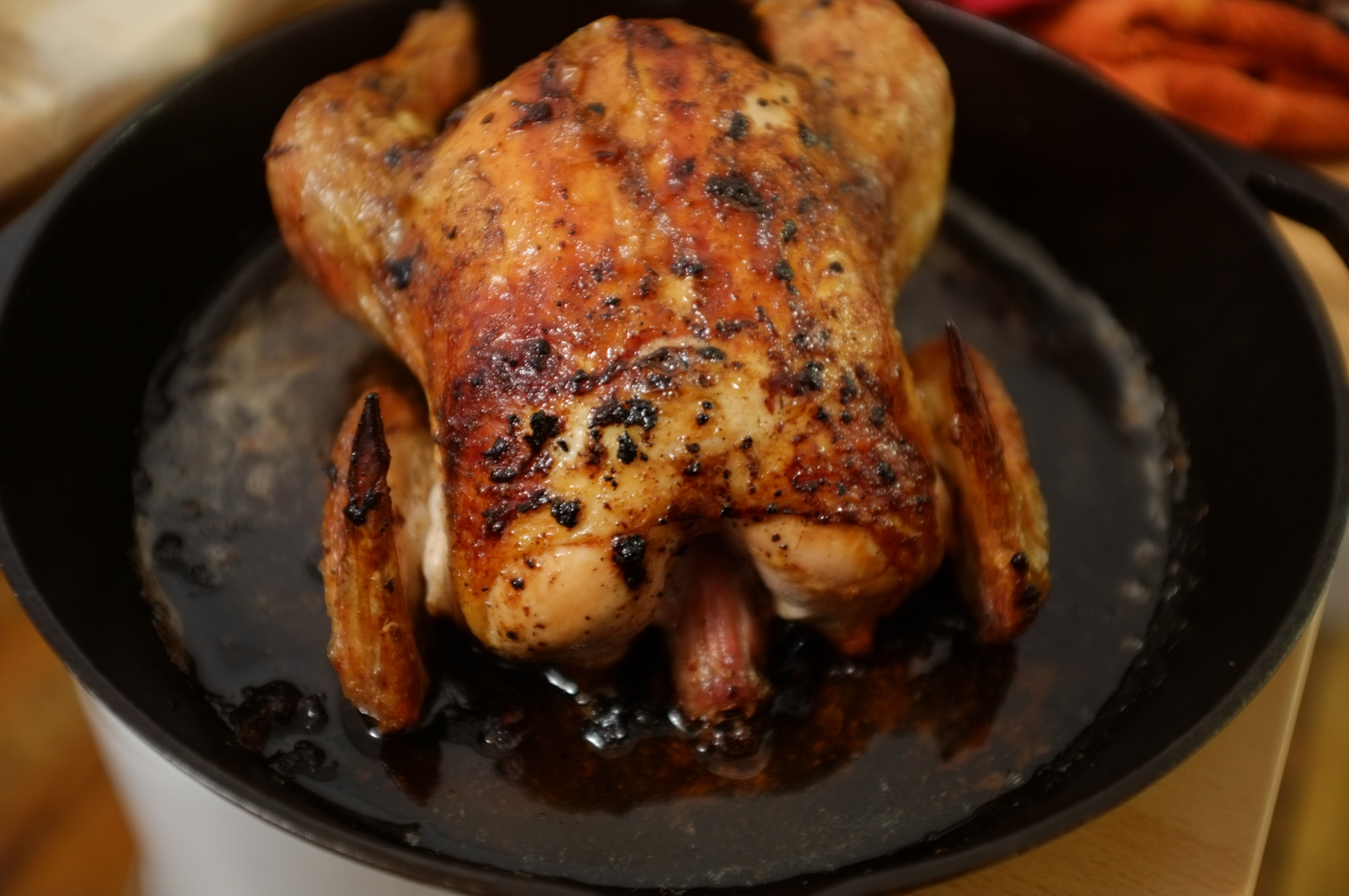Is there anything better than coming home to a roasted chicken for dinner? The answer is yes, eating the roasted chicken cold the next day with mayonnaise and a hunk of bread. But I won't go into that since my incessant mayonnaise talk seems to turn a lot of people off.
But, somewhere in the course of history, people started talking about trussing and stuffing and basting and chickens just got way out of hand. The perfect chicken needs nothing more than butter, salt and pepper. And a small one can cook in an hour. I've waited longer for a baked potato, for Pete's sake.
I'll admit: I usually just wing it when it comes to roasting a chicken. I don't check the internal temperature, I don't tent with foil. I'll stick a lemon, a head of garlic or some leftover herbs in the cavity if I have it. I might cook it at 400 degrees one day and 475 the next.
So rather than a "recipe," which you could get from any host of sources (but here's one I'd trust-- just swap out the oil for unsalted butter, ehem Mark Bittman), I'm just going to give a few "tips.". Recipes often gloss over these nuances, so keep 'em in mind if you're giving whole roasted chicken a try.
1. Get a good chicken. Obviously not necessary, but a fresh chicken tastes wholly different from a frozen one. An organic, free range chicken will taste even better. The bird will look a little skinny, since it hasn't been pumped with hormones, but the taste will be delightfully more chicken-y and the texture will be less chewy.
2. Don't stress about it getting dry. I don't know about you guys, but I'd rather have a dry turkey breast than a not-yet-crispy skin or an under-cooked thigh. Turn the heat up high and crisp up that skin. The skin's crispy brownness is usually how I gauge whether or not I want to take the bird out of the oven.
3. Use butter. It tastes better than olive oil, it really does. And butter will get hotter and burn faster. Now, you don't want charred skin, obviously, but flecks of crunch are the best part.
4. Check for a bag inside! My college roommates and I learned this the hard way. I remembered my mom taking out the giblets and boiling the liver as a kid, but only after the fact.
5. If you have it, cut a lemon and/or a head of garlic in half and stuff inside. Otherwise, you honestly just need butter, salt and pepper, all used liberally. Save the stuffing, mirepoix and compound butters for your Thanksgiving turkey. (I will use a handful of herbs, but only if I want to make use of some extra I have in the fridge. It's not worth buying/trudging out to your garden for them just for this occasion, if you ask me.)
6. Who needs a roasting pan? Again, it might come in handy for Thanksgiving or if you're doing some other big Sunday roast for family, but for a chicken, I like to just use a cast iron skillet. The skin on the chicken's underside won't crisp up, but let's face it, it never does... even on a roasting rack.
7. Let your chicken rest. It'll keep it moist (even though we're not worrying too much about that, remember?), but it's also totally annoying to break apart a piping hot bird. For a small chicken, let rest at least 20 minutes, ideally longer, but we all need to eat sometime, amiright?
8. Serve with baked sweet potato fries and a butter lettuce salad. Such perfect flavor combos and textures. I crave/cook this exact meal probably twice a week. Take my word for it; it's perfect!
And don't forget the mayonnaise.

